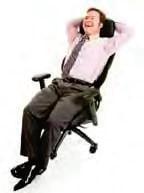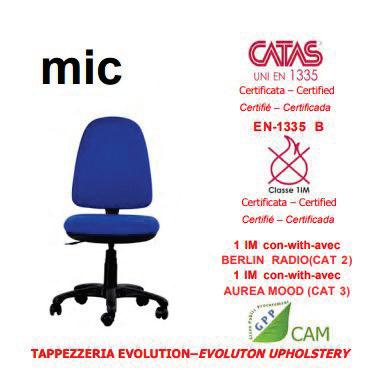
















Display screen equipment is a term that includes any work equipment that incorporates an electronic visual display of information. The most familiar is the computer workstation that is on the desk of most office workers and many in industry. However, it also includes other equipment that forms part of process controls and other equipment.
Work on DSE is the cause of a range of musculoskeletal injuries, which are the most frequent cause of lost work time in Ireland and the UK. These include conditions such as carpal tunnel syndrome, tenosynovitis, lower and upper back pain. These can result from repetitive motion when using the keyboard and mouse as well as poor posture.
Be Good:
The risks can be managed by following good ergonomic principles when choosing equipment and designing workstations.
Guide to the Safety, Health and Welfare at Work (General Application) Regulations 2007.
Chapter 5 of Part 2: Display Screen Equipment. (EU Directive 1990)
Assessments must be carried out for all employees whose work requires them to use display screen equipment. The assessment must address the following factors:
The task itself – how much time the employees spends on display screen work each day, how long does an employee work continuously without a break, the degree of concentration which is required, the degree of keyboard and mouse work etc.
The equipment – the type of screen, keyboard, mouse etc and the ease with which they can be used. Can the screen be easily read, do characters appear on the screen after input, with no delay. Can the screen be adjusted for height, brightness, contrast etc.
The furniture – is there adequate space to adjust the lay-out of the equipment on the desk?
Can the chair be adjusted for height, back support, tilt, seat depth and thigh support?
The environment – is the lighting, acoustics, temperature and humidity sufficient to create comfortable working conditions.
The individual – does the employee have any special feature, e.g. very tall, very short, preexisting medical conditions, which may mean that specific requirement may be necessary.
Elsewhere:
Not only should the workers in the office have the DSE work assessed but the regulations also apply to other groups such as:
Home workers.
Temporary or part-time staff, including agency workers.
1. Are entitled to have their workstation assessed/ re-assessed.
2.Must be trained in the use of the workstation and be given information about health and safety factors.

3. Must also have periodic break or changes of routines away from VDU’s.
4. Must be advised that they are entitled to an appropriate eye eyesight tests (or may opt for either).
5. Must be instructed in how to adjust chairs properly in order to find the best sitting posture to avoid the long term problems of muscular strain and backache.
6. Entitled to a minimum office space per person of 4.65 sqm.
Following the assessments, control measures must be put in place, which should be based on good ergonomic principles. All employees should then be educated in the correct use of this equipment and the optimum way to set up their workstation. They must also be informed of the employer’s policies on issues such as eyesight tests breaks etc.
Sitting should be a dynamic activity. The inter-vertebral discs cannot absorb fluid when under strain.

Pay for themselves only when demonstrated and installed properly.
Holding the same position for a period of time, known as static load, can cause pain and fatigue. That is why it is important to encourage frequent movement and posture change.
It is good to change position and move. There is no ‘correct’ posture that is best for an entire work day - so furniture that allows for the small unconcious movements that a person makes is ideal.


Industry
- ‘Furniture Design Toolkit’
Relative pressure exerted on the intervertebral discs in %
“The best posture is the next posture”



























Permanent Contact Mechanism
Ratchet
Choice
Posture
Made
Year
Fireproof foam and fabrics
All
Available



































































































BakkerElkhuizen is a specialist in designing ergonomic solutions. As such a specialist, people are our special focus and our products satisfy high demands in the field of user-friendliness, functionality and design. The R&D department reasons based on the 4 workstation concepts for a fixed, mobile, flex and home workstation. For each workstation situation, we offer the right solution and the right product.











Cardinus is a leading health, safety and risk management specialist

ering online and on-site solutions

all areas of your business.

in a number of core areas of safety and risk management, Cardinus offer complete solutions for display screen equipment compliance, safety training.
Studioline is a reseller of Cardinus Risk Management products in Ireland and are certified Cardinus DSE Assessors.

your first steps to safety compliance today
health & safety solutions for small and medium enterprises
Adopting best practice in o ce ergonomics helps avoid repetitive injury strain issues.